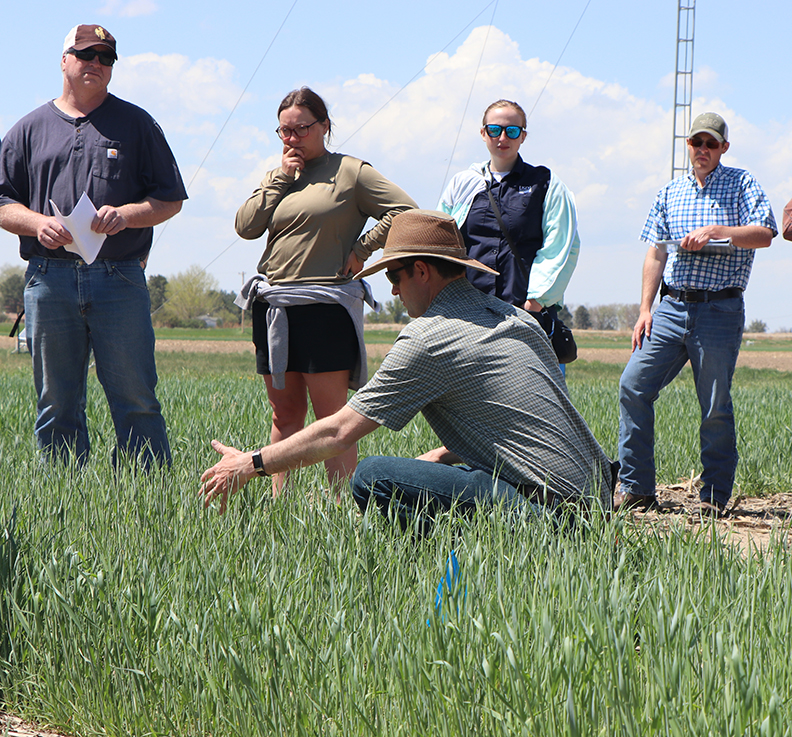The Cover Crop Initiative Project held its first field day at the Panhandle Research Education and Extension Center (PHREEC) in early May. This project represents a four-year collaborative agreement between the University of Nebraska-Lincoln (UNL) and the Nebraska Natural Resources Conservation Service (NRCS) to foster understanding and promotion of cover crop use in Nebraska.
The Initiative has established cover crop variety trials in multiple locations across the state, including five UNL research stations with distinct agroecology.
"Identifying the most suited cover crop species or variety for the unique eco-region to achieve specific management goals is a crucial part of this project," said Vesh R. Thapa, UNL postdoctoral research associate. Thapa offers experimental support to the project and stressed the significance of species selection based on locally sourced data for successful cover crop implementation.
On May 9, the PHREEC hosted 18 NRCS Conservation Planners at the Scottsbluff campus to increase their understanding and skills for utilizing site-specific cover crops for soil health management. The training program included both indoor and outdoor sessions. The indoor session offered NRCS-Cover Crop 101, a curriculum designed to equip participants with the necessary knowledge and skills to plan, design, and integrate cover crops into existing cropping systems.

Aaron Hird, USDA NRCS Nebraska state soil health specialist, discusses some of the findings in this year’s Cover Crop Initiative event in Scottsbluff.
"Our aim is to enrich conservation planners with knowledge on strategic cover crop use in their respective areas," said Aaron Hird, USDA NRCS Nebraska state soil health specialist.
The outdoor segment allowed attendees to see the performance differences among cover crop varieties in the field, enabling them to make informed recommendations to farmers. For the field trial at Scottsbluff, a variety of 30 treatments, including 11 grasses, six legumes, five brassicas, and eight mixes, were selected. Thapa said varieties in the study included different species of oats, barley, triticale, winter wheat, rye, hairy vetch, pea, collards, radish, rapeseed, and camelina.
Field data showed that three rye varieties (Elbon, Yankee, and Hazlet) outperformed all other treatments despite heavy winter grazing by Canadian Geese.
“The rye varieties rebounded remarkably in the spring with conducive soil temperatures for growth," said Thapa. Although most species demonstrated good establishment in the fall, a few struggled with the weather. The low, freezing temperatures and frost damage resulted in the winter kill of oats, barley, peas, and brassicas.
Graduate students Grace Emperatriz Pacheco Jiron and Bridget McKinley play a key role in the project. They are measuring the productivity of different cover crop varieties, above and below ground, and assessing their impacts on various soil properties to aid soil quality enhancement.
“The project is still in its early stages and halfway through,” Hird said. “The partnership has afforded us the opportunity to learn about each other and open opportunities at the University of Nebraska-Lincoln’s research extension plots to study cover crops to maintain soil health and possible forages.”




